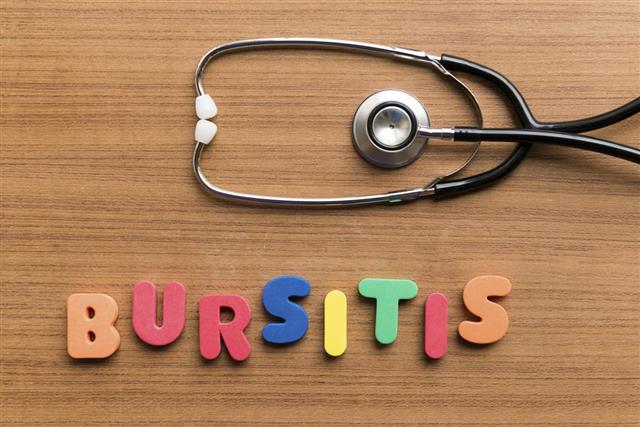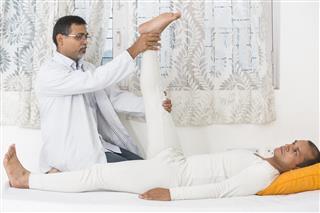
Hip bursitis is a very painful condition that afflicts the hip, and greatly restricts movement and mobility. Here are some of the common symptoms of hip bursitis that make it an easily recognizable condition. Read on…
Hip bursitis is a medical condition that essentially means swelling of the hip bursa sac. It causes intense pain in the outer region of the upper thigh. It can be an unpleasant ordeal as it severely hampers the movement and mobility, and causes extreme discomfort while carrying out daily activities. Contrary to popular claims, this is not a form of arthritis, although the symptoms are similar. There are a few distinct symptoms that make this condition easy to diagnose.
Facts
► There are about 160 bursae in the human body.
► Signs of hip bursitis are often confused with four other conditions: Iliotibial band tendonitis, Hip pointers, Meralgia paresthetica, and Lower back conditions.
► People with HIV, diabetes, gout, arthritis may be prone to septic hip bursitis.
The Condition
The fluid-filled sac in the human hip, called hip bursa, aids in smooth and painless movement. This sac acts as a cushion during movement, which reduces friction when two bones, cartilages, or tendons rub against each other. However, when this sac gets inflamed, it causes severe pain and difficulty in movement. The pain is debilitating, and any movement that involves the hips, turns out to be extremely painful for the person involved. Each time the tendons above the bursa move, the person experiences a great deal of pain. There are three types of bursitis, depending on the specific area which is affected – Trochanteric bursitis (side of the hip), Ischiogluteal bursitis or ischial bursitis (buttocks), and Iliopectineal bursitis (tendon near the hip). As all these affected areas are in proximity to each other, the main causes, symptoms (severe pain in the hip area), prognosis, and treatment for these are more or less the same.
Symptoms
Since this is a medical condition associated with intense pain, the most glaringly symptom of it is related to the sensation of pain. Some of the most common symptoms are categorized according to the type of hip bursitis:
Trochanteric bursitis
Inflammation of the trochanteric bursa, which acts as a shock absorber, causes this condition. It lies adjacent to the femur.
- A patient usually experiences pain in the hip area and outer upper thigh regions.
- The pain seems to worsen with time. Gradually the pain translates into burning aches.
- The pain tends to intensify when lying on the affected side, like sleeping or balancing during exercise and sports.
- With this condition, a person might limp while walking or running.
Ischial bursitis
When the bursae separating the gluteus maximus muscle of the buttocks and ischial tuberosity gets inflamed, it leads to ischial bursitis or ischiogluteal bursitis. Its symptoms are:
- Pain on the lower buttocks while trying to sit or lie down.
- Tenderness of the ischial tuberosity, the bony prominence on which we sit.
- Excruciating pain while stretching the leg muscles, or warming up before a workout or sports.
- The pain becomes prominent while running, sprinting, or climbing stairs.
Iliopectineal bursitis
In case of the iliopsoas, or iliopectineal bursa — the largest bursa in the body — injury could be due to rubbing or friction of the iliopsoas on adjacent structures apart from any infection, trauma, etc. Iliopectineal bursitis, also called iliopsoas bursitis, is caused due to inflammation of the bursa between the iliopsoas muscle and the inguinal ligament. Some of its symptoms are:
- Pain in the groin area, which is usually localized below the groin crease. Hence, a slight movement involving the muscles near the groin causes immense pain.
- The pain in this case is sharp and worsens during physical activities.
- The pain is experienced on the outer hip region along with swelling and tenderness.
- In case of septic bursitis (infection of the bursa), the swelling could be warm to touch with visible redness of the skin in the groin area.
Causes
There are many causes of this condition, but basically any physical trauma suffered on the hip can lead to hip bursitis. These are given below.
► An accident, major fall, hitting into a wall, or some hard object, and receiving an extremely hard blow on the hip.
► Constructive hip surgery also results in this condition, if the surgery has not been carried out properly.
► Diseases like gout and arthritis, and infections like staphylococcus infections and tuberculosis can lead to bursitis in the hip.
► Continuous pressure on the hip muscles due to certain activities like cycling, running, climbing, etc. can aggregate the problem.
Diagnosis and Treatment
The main diagnostic method for this condition is physical examination by a medical practitioner. It is usually enough to state the condition. In certain cases, X-rays and blood tests might be suggested to confirm bursitis. The treatment for this malady is fairly simple, once you understand the nature of the condition. Few general treatment measures for this condition are:
► Avoid any activity that puts pressure on the affected area. Complete rest of the hip is advised to protect it from inflammation and the resulting pain.
► For pain relief Cortisone and Lidocaine injections are commonly administered. At home you can use ice packs which gives temporary relief from the discomfort.
► Anti-inflammatory drugs like ibuprofen helps in reducing the swelling considerably.
► Physical therapy involving stretching exercises and massages have also been proven to be effective.
► In extreme cases, a corrective surgery or even hip replacement surgery may be required.
You would always be well-advised to take even the slightest of discomfort, especially around the joints seriously, and see a physician about it. Hip bursitis can be a painful ordeal but with timely diagnosis and effective treatment, you would be back on your feet in no time.
Disclaimer – This article is for informative purposes only, and should not be used as a replacement for expert medical advice.






